Morte e Resurrezione
Un percorso della vita dell’uomo, una sorta di bilancio della nostra esistenza: un bilancio che serve a capire quanto sia stato per noi felice o meno il nostro cammino; il cammino difficile di ogni giorno, e nello stesso tempo scoprire il piacere di esserci per ottenere un’interrotta conquista. Nell’opera l’artista scava dentro l’essere, mettendo a nudo le luci e le ombre dell’esistere quotidiano dell’uomo; sempre più solo, privo di punti di riferimento, ossessionato dalla sua vulnerabilità. Tutto ciò è espresso in ogni opera con segni forti ed imperfetti che delineano il significato stesso della scena e del tema ivi trattato. A tal senso ogni opera presenta una parte pittorica (olio su tela), ed una parte materica, più applicazioni di tela e perline…La parte materica è una costante, attraverso parti scarnificate o buffamente deformate, l’artista tende a dare risalto all’effimera (seppur vera) vanità dell’uomo, riconducendo quest’ultimo verso un destino segnato identificabile attraverso i temi trattati, ovvero le problematiche sociali e spirituali dell’uomo contemporaneo. In ogni composizione è presente l’azione dei tondi, o degli ovali dipinti che isolano la figura principale, ma la contengono, facendo sì che nessuna storia si insinui o provi ad insinuarsi nell’insieme illustrato, definendo e privilegiando il soggetto dominante dell’intera composizione. Inoltre presente è l’idea presente un capezzolo gocciolante di “succo” rossastro…..(perdita….di amore, decadenza e dispersione dei valori più intimi e sacri dell’uomo..). Tuttavia l’artista presenta un forte senso religioso del fare “arte”, ed è proprio attraverso il suo spirito forte e lucido che l’artista vuole mantenere viva l’idea di un trionfo della vita e dei suoi più alti valori spirituali. Per concludere il suo è un monito contro la terribilità del divenire che strugge, rovina e distrugge, e quindi un tendere al godere della vita seguendo i suoi principi alti, partendo dal dono della vita datoci da Dio, e dalla fede che come per incanto trasforma ogni caduta in una certa risalita e quindi resurrezione. Il ciclo si compone di 14 opere, come le stazioni della via Crucis; per contrapporre alla morte del corpo la resurrezione dell’anima.
Sicilian Artist Ernesto Graditi to Exhibit and Perform at Galerie St. George in Italian Cultural Festival Staten Island, March 22, 2009—Galerie St. George today announced an exhibition of paintings, drawings and other works by Italian artist Ernesto Graditi (b. 1972). The show will open on Saturday, May 23rd, 2009 with a public reception from 4 – 8 p.m. at the gallery located at the landmark 1885 Anson Phelps-Stokes estate at 11 Phelps Place, Staten Island, NY 10301, and will run through July 11th, 2009. Graditi, who joins the gallery—comprised of mainly New York artists—from his native Sicily, brings with him an interesting and complex oeuvre, a product of his multidimensional focuses in painting, science, architecture and film. “My collaboration with Galerie St. George gives me the opportunity to show my work and express my creative vision for the first time in the U.S.A.” stated Graditi, who is also a professor at the University of Palermo’s School of Literature and Philosophy. The exhibition features works from his 2007 series “Morte e Resurrezione” (Death and Resurrection), which presents the viewer with a criticism of contemporary life through such themes as love, luxury and madness. A powerful sense of religion pervades the artist’s visual tableau, so that life and spirituality triumph over vice. People remain at the core of Graditi’s quasi-surreal landscapes—at times deserted or laden with colorful architecture and native flora and animals. This dualism opposing the Death of the body and the Resurrection of the soul is central in this series of fourteen paintings, paralleling the fourteen Stations of the Cross. Ernesto Graditi’s figurative work can be characterized by his revisiting the past—often from varying thematic and technical approaches. We might consider “Normannesimo” 2 (Normanism), Graditi’s [2004] series consisting of 50 oil paintings, as the height of his historic inquiries, of which people and cultures remain at the heart. Here, the artist explores the Norman occupation of Medieval Sicily, his longtime passion, which resulted in Sicily’s hybrid culture, composed of Arab, Byzantine, Southern Italian, and Northern European influences. Architecture, sculpture, and mosaics, as well as the celebrated Bayeux tapestry, attest to this cultural fusion and provide inspiration for this series, now in the Collection of the Office of Cultural Heritage of Sicily and on permanent display at the Museo Regionale di Storia Naturale (Regional Museum of Natural History). In a recent development, Graditi stitches these “Medieval” scenes onto coppole, traditional Sicilian caps, to further the cross-cultural theme. Graditi’s Sicilian caps will be part of this exhibition. “We are excited to introduce this bold, visionary artist for the first time in the United States,” stated Gary Brant, Director of Galerie St. George. “Combining a rich sensibility for the past and iconic traditions in surrealistic tableaux are at once beautiful and haunting,” Brant continued. “For me, the artist is a messenger of God and art is a means to instruct people about human existence.” Graditi likens himself, as seen from this quote, to the ancient masters: his drawings and paintings, expressing historic tales, ideas, and ancestral visions, exhibit technical mastery yet are easy for the public to understand. To these ends, Graditi takes part in public performances throughout Sicily, integrating design, dance, and music. On May 23rd, 2009 Ernesto Graditi will perform at Galerie St. George during his opening reception, thus bringing his artistic vision to the North Shore of Staten Island, in an Italian cultural festival complete with Italian music and cuisine. This special event is free for all attendees. For further information, kindly contact: Gary Brant, Director Alexis Romano, Director of Public Relations Galerie St. George Galerie St. George 11 Phelps Place 245 Benedict Road Staten Island, New York 10301 Staten Island, New York 10304 Telephone: 718.390.0130 Mobile: 347.466.2931 Mobile: 917.378.2525 email: ar@galeriestgeorge.com email: gb@galeriestgeorge.com

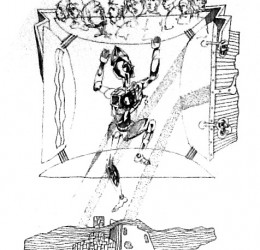







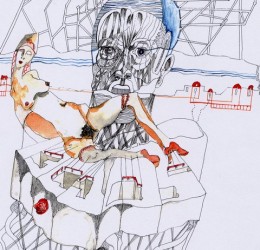

















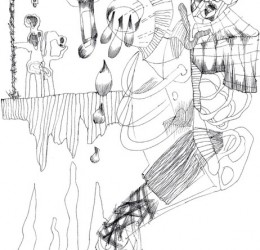


















































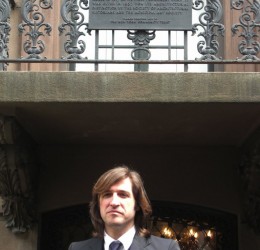
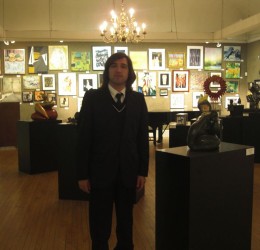
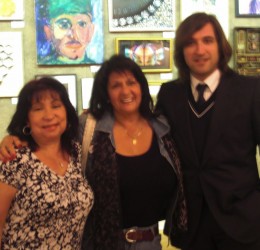
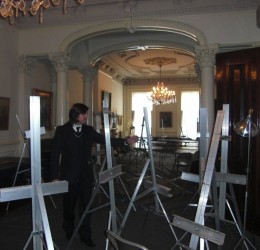







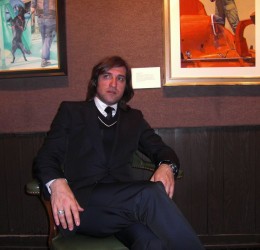


 English
English Italiano
Italiano